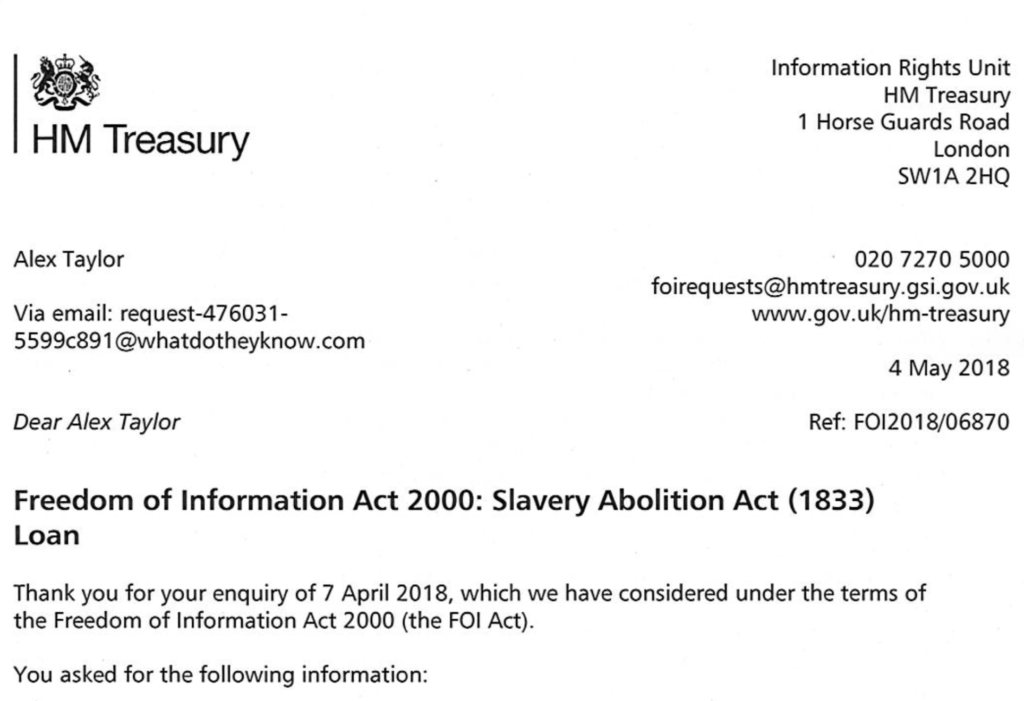In response to a story reported via a number of news sites and exploring a thread in my own research, I submitted a Freedom of Information (FoI)
request to Her Majesty’s Treasury on the 7th April. In brief, I requested further details on the amount paid per year to repay the Slavery Abolition Act loan, a loan taken by the UK government in 1834 to ‘compensate’ slave owners for their loss of ‘property’. Shockingly, this loan was being repaid up until 2015 by UK taxpayers.
I made
my request using the amazing
WhatDoTheyKnow site. I’ve included the text from my request below for context.
To Her Majesty’s Treasury,
As widely reported, in 1833–35 [1] the UK government borrowed £20m, 40% of its national budget, to “recompense” slave owners for losing their “property” [2] — under the Slavery Abolition Act. On 9 February 2018, HM Treasury announced (via Twitter) that this loan had been paid in full. A related FOI request that HM Treasury responded to on 9 February 2018 sets the date of the loans ‘consolidation’ to be the 1 February 2015: “The 4% Consolidated Loan was redeemed on 1 February 2015” [3].
Under the Freedom of Information act, I request further details of this loan. Specifically, I request the annual amount paid per year since 1833–35.
I also request to total sum paid to repay the loan, including interest.
Yours faithfully,
Alex Taylor
London
1. From the documentation available, it’s unclear whether the loan began in 1833 or 1835.
2. This was covered by a number of news organisations. Two examples from the Guardian follow:
— https://www.theguardian.com/commentisfre…
— https://www.theguardian.com/commentisfre…
3. https://www.gov.uk/government/publicatio…
Having left their written response to the last day of the 20 working days usually allotted, HM Treasury replied with a somewhat muddled message offering some details, but not fully answering my request. Some equivalent to “HM Treasury does not hold information/records” was used four times in a one-page response:
“HM Treasury does not hold information within the scope of your request.”
“HM Treasury does not hold records dating from this period.”
“HM Treasury does not hold any detailed information on the structure or amounts of repayments…”
“HM Treasury does not hold information on the total interest paid…”
The letter from HM Treasury is available via WhatDoTheyKnow here.
I will be continuing this research and share any further information I’m able to obtain.



